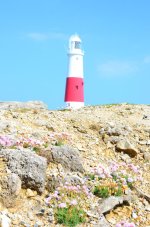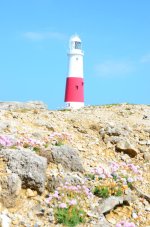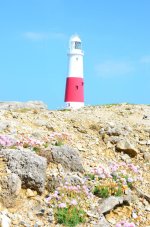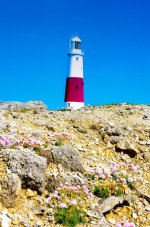Somersetscott
Senior Member
Hi, I may have processed this in a 'bottom backwards' way - So I was in the Isle of Portland in Dorset and found myself stood on a sand dune positioning to hide the people walking and sitting around the bottom of the light house. This caused an issue where by I could either focus on the dune and nice flowers but miss the detail on the lighthouse or focus on the lighthouse and miss the foreground detail, so I took two shots below:


Details:
D7000
Nikon 35mm 1.8g DX
Manual
Exposure time 1/640
@ F10
ISO 500
Auto WB#
Tripod used!
I then set about joining these two - I used the freeware Paint.net, layered them ontop of eachother and lasso tooled and deleted the section on the top layer that was out of focus and deleted it carefully and saved, result:

Then imported to lightroom 4 to adjust the temperature, shadows, whites, blacks, sharpen, add gradient etc etc. and ended up with this:

What do you guys think of the image?
Also is there a clear fault in my workflow/an easier way of doing this?
Please be honest, Many thanks!
Scott


Details:
D7000
Nikon 35mm 1.8g DX
Manual
Exposure time 1/640
@ F10
ISO 500
Auto WB#
Tripod used!
I then set about joining these two - I used the freeware Paint.net, layered them ontop of eachother and lasso tooled and deleted the section on the top layer that was out of focus and deleted it carefully and saved, result:

Then imported to lightroom 4 to adjust the temperature, shadows, whites, blacks, sharpen, add gradient etc etc. and ended up with this:

What do you guys think of the image?
Also is there a clear fault in my workflow/an easier way of doing this?
Please be honest, Many thanks!
Scott
Last edited by a moderator:
